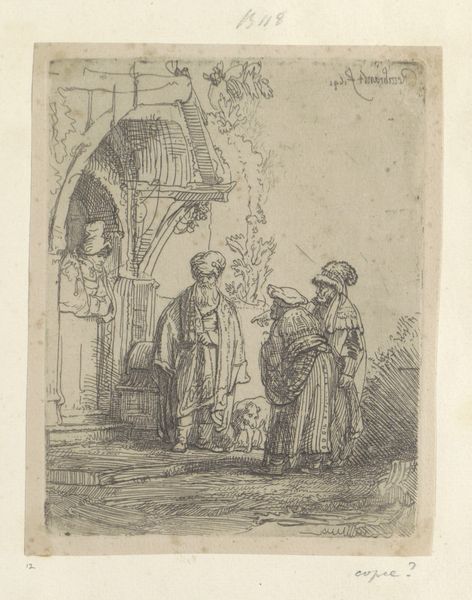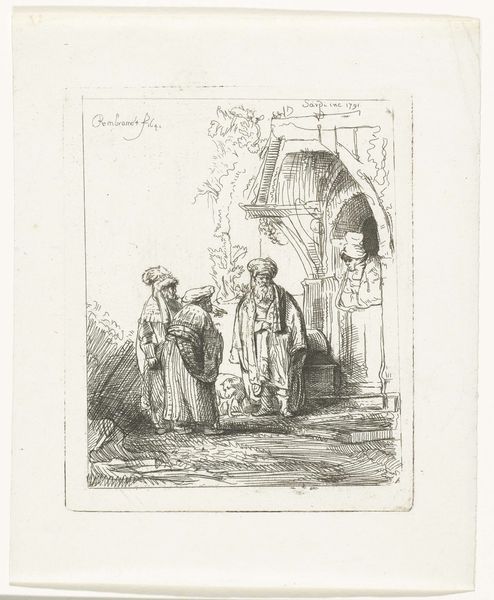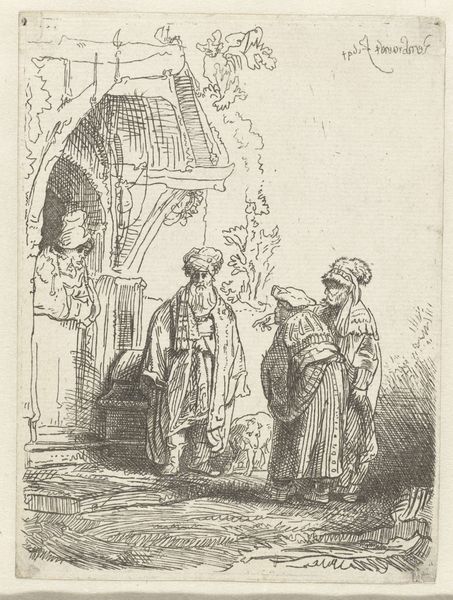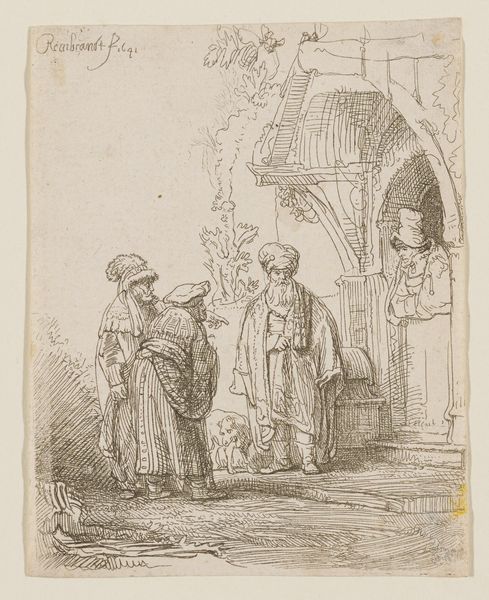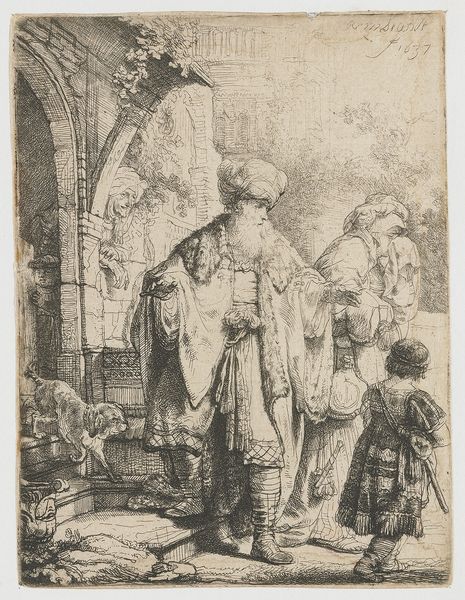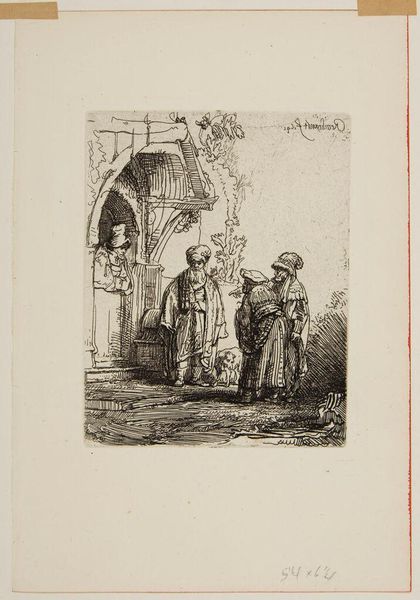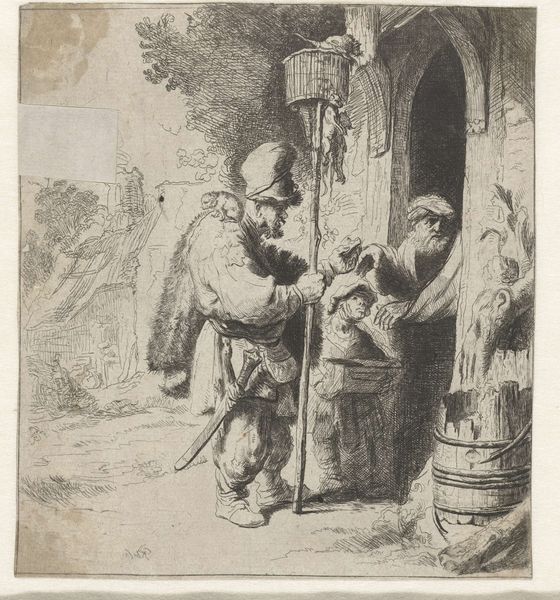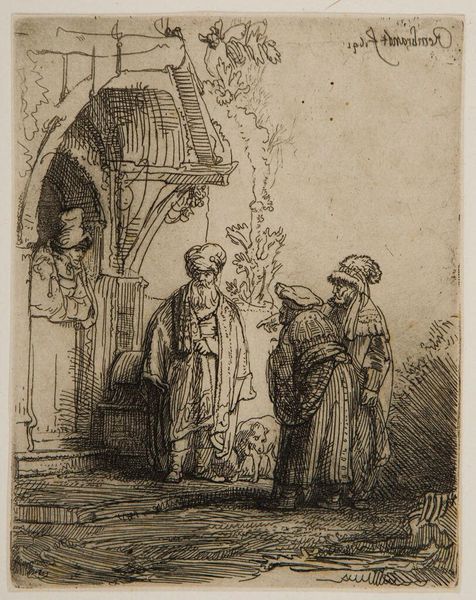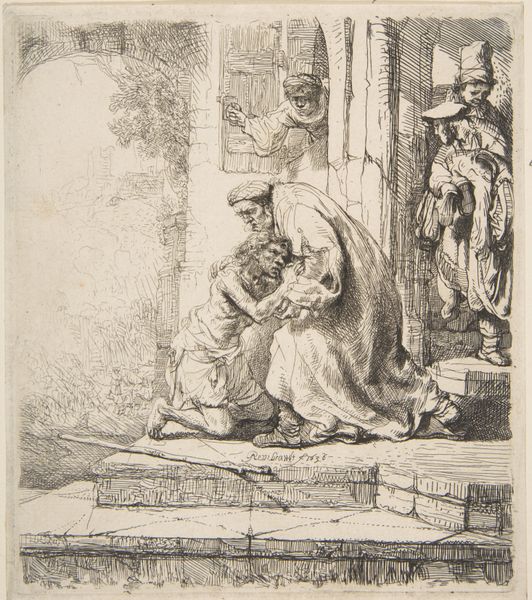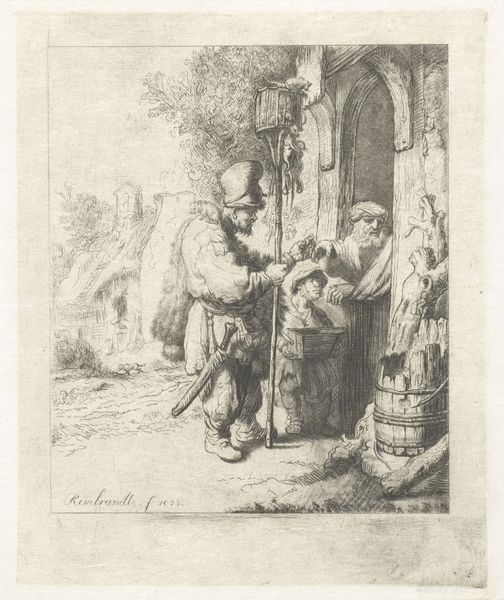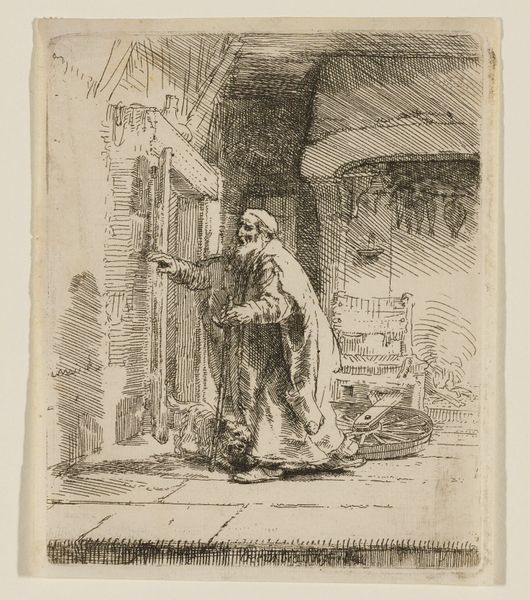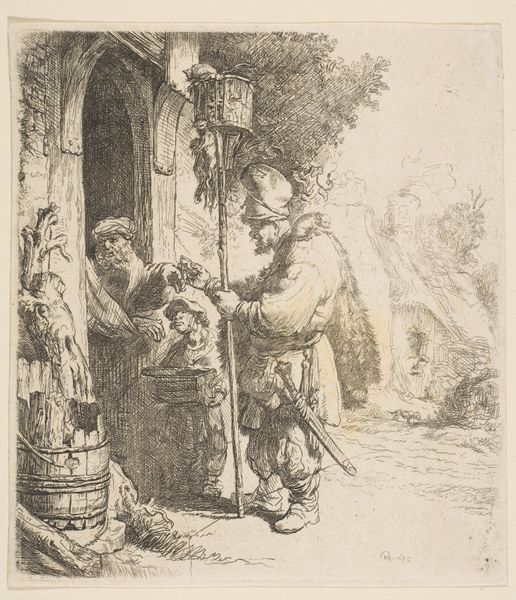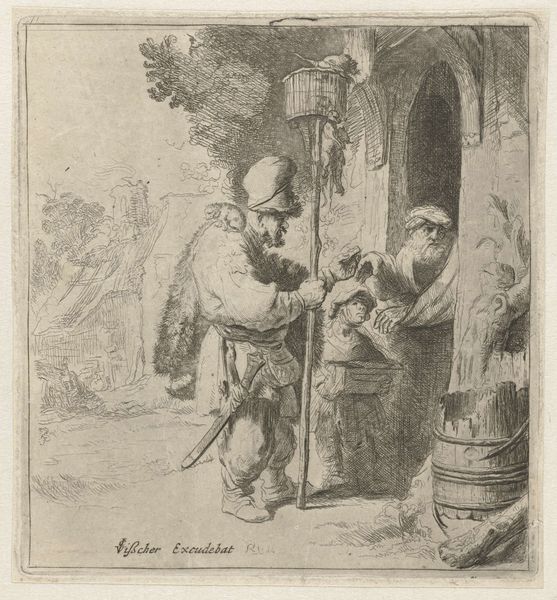
print, engraving
#
baroque
#
dutch-golden-age
# print
#
figuration
#
line
#
history-painting
#
engraving
Dimensions: 145 mm (height) x 114 mm (width) (plademaal)
Rembrandt van Rijn created this etching, Jacob and Laban (?), during the Dutch Golden Age. It depicts a biblical scene, likely referencing the complex kinship dynamics between Jacob and his uncle Laban. The image creates meaning through its visual codes, cultural references, and historical associations. Rembrandt lived in a society where the Bible held considerable cultural authority. His choice to represent biblical narratives reflects the religious and moral values of his time. The image also conveys the Orientalising stereotypes typical of the 17th Century. Note the turbans and exotic garments worn by the figures. This was a period of increased trade and cultural exchange between Europe and the East, which led to a growing interest in representing foreign cultures, however inaccurately. Historians of art and culture study such images by considering the socio-political context in which they were created. Researching period costume and religious custom helps us understand how the artist constructed meaning.
Comments
No comments
Be the first to comment and join the conversation on the ultimate creative platform.
